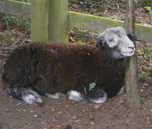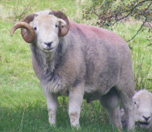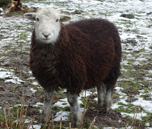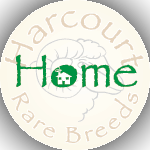
The Herdwick Sheep is another of the breeds not named after its county of origin. Herdwicks are the architects and custodians of the Cumbrian landscape, working with nature to create this most unique and beautiful area in the world.
Once it was believed that Herdwick sheep were brought to he area by the Vikings, but this is likely to be myth. The reality is that these hardy sheep have probably evolved through the ages and are likely to be the descendants of the sheep of the first settlers following the last Ice age.
To understand the Herdwick sheep you need to look at the challenges of the area and the history of this pretty little animal. Those early settlers had to find solutions to some daunting practical challenges; particularly the tough climate, and the large areas of unfenced common grazing land on the fells so this tough little animal developed and reflect the hardships faced.
Herdwicks survive extreme winters better than any other breed because they have developed to be tough. They have a broad muscular body covered with a heavy dense fleece with a warm insulated undercoat; their heads and legs are strong boned, as strength and mobility are needed in this mountainous region. Rams may be horned but the females should not. Lambs are born black but as with many of use, they grey with age.
Herdwicks are the architects
and custodians of the
Cumbrian landscape
Herdwick sheep and the way that they are farmed are the result of thousands of years of cultural development to address the challenges of the fells. Each sheep know which bit of the fell they are supposed to graze, and unlike most other sheep breeds they keep to this ‘heaf’. Each generation of sheep pass this knowledge of belonging on to their offspring. Because of this in-built homing instinct many flock are sold with the land when a farmer retires, so many Lake District farms have flocks that been in place for centuries,
But the vikings did do one thing for the Herdwick, they gave it a name, ‘Herdwick’ is derived from the Old Norse ‘herdvyck’, meaning sheep pasture, so they have some involvement in the story of this charming companion of the hills.
Although this wool is course it has unique durability which makes it ideal for hard wearing clothing such as socks, hats and gloves, or for tapestry work, carpets and the like; also ideal to blend with softer products.
Fleece Weight: 1.5 - 2 kg Staple Length: 10 - 20 cm Micron Range: 35+







